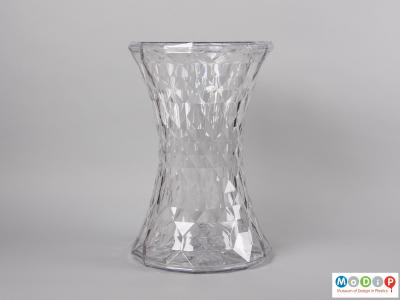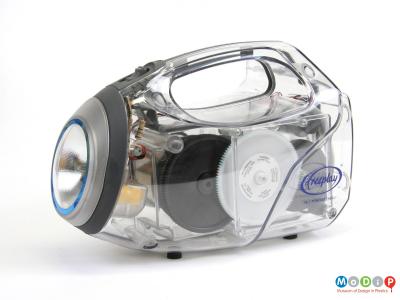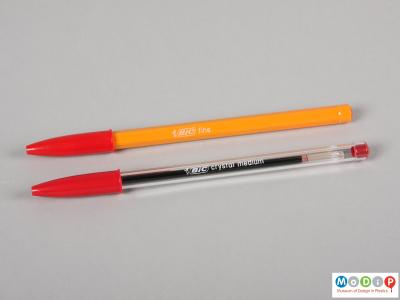There are many reasons why a transparent material might win over one which has opacity. The need to view the contents or the curiosity to see what goes on inside are facilitated by a transparent glass like material which has sufficient strength to hold and/or protect whatever it contains. The colourless transparency of some plastics used in furniture for example can lend an object an ethereal delicacy which belies its strength. There are plastics which offer all of these qualities without the inherent dangers of the alternatives such as glass.
The Stone Stool (1) by Marcel Wanders maximises the light reflecting qualities of the polycarbonate by using a jewel like faceted design. It appears to be made from glass but is much lighter and has far greater strength. The transparent dust collection bin of the Dyson vacuum cleaner (2) was considered to be quite novel when it was first introduced. Not everyone appreciated seeing the evidence for the amount of dust which lay hidden in their carpets, but the very fact that one could see just how much dirt was being collected could be reassuring, and the impact resistant, transparent polycarbonate allowed the operator to see the cyclone spinning and to monitor just how full the bin was getting. All this is now commonplace, but when it was first launched in 1993 it was innovative in both technology and design.
Curiosity about seeing how things work is satisfied by the clear injection moulded acrylic case of the Freeplay wind up torch (3) in which the internal clockwork mechanism can clearly be seen unwinding, and the levels of ink remaining can be monitored through the clear, colourless polystyrene barrels of the ubiquitous Bic biro (4).




